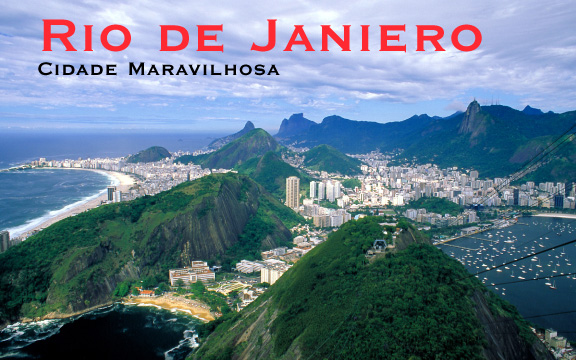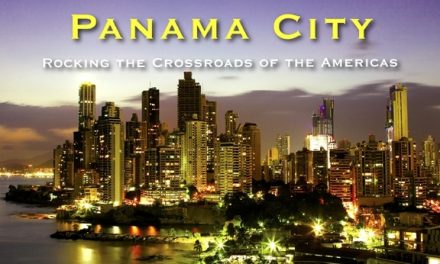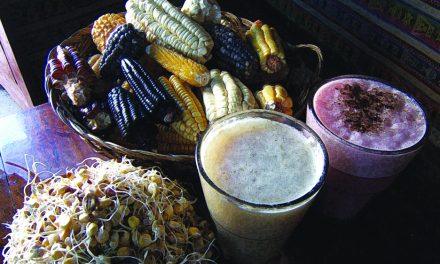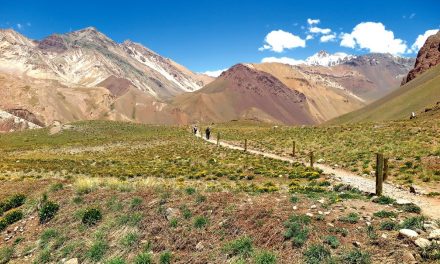Rio de Janeiro
Cidade Maravilhosa
Published in the November, 2003 Issue of Canadian World Traveller
Photos Courtesy of Brazilian Tourism Board www.brasembottawa.org/en/travel_tourism
Rio de Janeiro’s natural beauty, rich history, and the contagious fun of its residents have contributed to its image as a not-to-be-missed tourist mecca, and never more so than during its two major annual festivals, Réveillon and Carnaval. Combine this with the sophisticated infrastructure of a modern city and a vibrant rainforest flourishing between the city and its beaches and you have a truly unique destination.
The city’s physical features are products of its mountain range named Serra do Mar, covered by the Mata Atlantica forest. They are characterised by marked contrasts: mountains and sea, forests and beaches, stone walls rising abruptly from extended lowlands, all forming the landscape of rare beauty that has made Rio famous all over the world as the Cidade Maravilhosa (The Wonderful City).
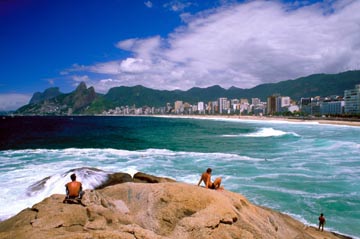 City of Contrasts
City of Contrasts
Rio is a city of contrasts: the colonial architecture provides a reminder of the past, striking modern buildings provide a glimpse into the future. Two landmarks, true postcard images, are known the world over: the Sugar Loaf and the Statue of Christ the Redeemer. Its legendary beaches include Ipanema, Leblon and Copacabana. Visitors always discover what the residents know and are proud of: there’s always something new happening in Rio – exhibitions, dance and music shows, sporting events.
Location, Climate & Population
The city of Rio de Janeiro is situated in the Southeastern Region of Brazil. To the south lies the Atlantic Ocean, to the east Guanabara Bay and to the west Sepetiba Bay. The municipality of Rio is 1,255 sq km in area, including the islands and continental waters. It measures 70 km from east to west and 44 km from north to south.
Tropical, warm and humid, the average annual temperature is 22°c, with daily averages high in summer (from 30° to 32°); rains vary from an annual 120 to 280 cm. In the four months of the so-called high summer (December to March) the very hot days are followed by luminous evenings when heavy and rapid rains usually fall, bringing relief and starlit nights.
Rio, Brazil’s second largest city after São Paulo, is populated by some seven million Cariocas (local residents – a veritable melting-pot – with Portuguese, African, German, Italian, Spanish, Polish, Japanese, Arab and Amerindian origins.
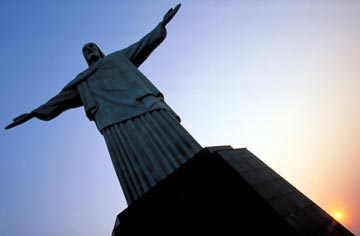 Government, Language & Religion
Government, Language & Religion
Brazil is a Federative Republic made up of 26 states and its capital, the Federal District of Brazilia. The official language is Portuguese, although Spanish, English and French are also spoken and understood in major tourist centres. Eighty percent of Brazilians are nominally Roman Catholic.
History & Culture
The first official mention of the city occurs with the second Portuguese exploration, led by Gaspar de Lemos, of the new land which had been discovered by Pedro Alvares Cabral in 1500. On arrival in the month of January, Lemos thought Rio de Janeiro’s bay was the mouth of a river, and named the region accordingly: River of January.
The city started to take shape in 1585 when its population numbered 3,850. Its vocation as the exporting port for gold ensured Rio’s continued development and at the end of the17th century, it became the thriving capital of the colony.
In the early 1900s, wide streets were built and impressive, palatial buildings were erected. In 1960, Brasília was inaugurated as the capital of the republic, but Rio has remained the cultural and social centre of the country.
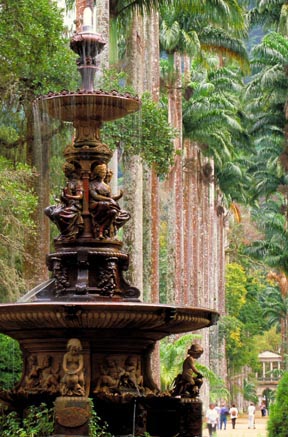 Cuisine & Beverages
Cuisine & Beverages
Rio boasts many world-class restaurants serving fine international cuisine, but there are also restaurants where you pay for the amount you eat (by the kilo). The traditional local Carioca dish is feijoada, a tasty rice and bean dish. The preferred beverages are beer, caipirinha made with cachaça (a sugar-cane based alcohol), and of course, Brazil’s world-famous coffee.
Getting There
Several international airlines offer scheduled services to Rio from U.S. cities (with connecting flights from Montreal). Flight time to Rio is eight hours from Miami, ten hours from New York and just over nine hours from Atlanta. Charter tours from Toronto, fly directly to Rio.
Visas & Vaccinations
A visa is required for Canadian citizens wishing to visit Brazil. To obtain a tourist visa contact the Brazilian Consulate. Canadians are not required to get vaccinations unless they have recently visited certain other countries. A list is available from the local Brazilian Consulate.
Getting Around
Rio de Janeiro’s subway is safe, efficient and easy to use. The Copacabana Metro station is located in Praça Cardeal Arcoverde, four blocks from the beach with other stations close to the city’s principal historical and cultural attractions. Major car rental companies have branches in Rio de Janeiro. An international driver’s license is required.
Where to Stay
Whether you choose to stay in one of Rio’s five-star luxury resorts, a Bed & Breakfast, a pousada (small, privately run inns), or a youth hostel, Brazilian hospitality will make your accommodation comfortable and enjoyable.
When to Go & What to Wear
Rio de Janeiro, as a travel destination, is not seasonally sensitive, as the climate is temperate year round, and its attractions can be enjoyed at virtually any time of the year.
Informality is the keynote in Rio de Janeiro in terms of dress. The use of jackets and ties for men is restricted almost exclusively to offices.
Things To Do
Rio’s best beaches such as Grumari and Prainha are found in the southernmost end of the city. Nonetheless, Copacabana, Leblon and Ipanema are still number one in terms of charm and glamour, offering pubs, restaurants and kiosks along their shores.
In addition to its beautiful beaches, the city has many museums, historic buildings, parks and places of interest such as the Museu Nacional de Belas Artes (Museum of Fine Arts) and the Museu Historica da Republica (Historic Museum), considered to be two of Brazil’s finest. The Corcovado and the Pão de Açúcar (Sugar Loaf) offer dramatic panoramic views of the city and Rio’s Guanabara Bay. There are also well-organised tours of the Jardim Botânica (Botanical Garden) and the Floresta da Tijuca (Tijuca Forest), the largest urban forest in the world.
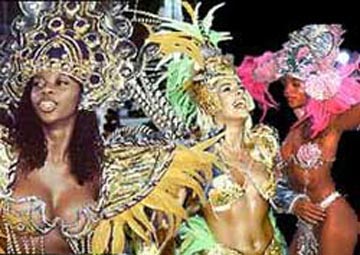 Carnaval
Carnaval
The biggest popular event in the world is held during the last two weeks of February. Rio’s Carnival (known locally as Carnaval) is a general explosion of joy, a unique expression of the melting pot that is Brazilian culture. The moment comes when all participants are the protagonists of their own play, costume, plot and samba.
The festivities begin on the Friday before Carnaval when the mayor symbolically hands over the key to the city to the King of Carnaval (Rei Momo). From Saturday to Tuesday, open-air dances, parades and balls with sumptuous and original costumes, and music competitions take place throughout the city.
Currency & Exchange
The Brazilian currency is the Real (R$); there are 100 centavos in one real. The value of the real against the Canadian dollar varies according to the daily rate. Banks and exchange bureaux are obliged by law to display net rates of exchange. Major credit cards are accepted at most shops. Generally speaking, travellers’ cheques are also welcome. However, visitors should check the daily dollar rate at their hotels before going on a spree.
For More Info:
Embratur Brazilian Tourism Board
450 Wilbrod Street
Ottawa, ON K1N 6M8
Tel.: (613) 237-1090 or (613) 755-5160
Fax: (613) 237-6144
E-mail: mailbox@brasembottawa.org
www.brasembottawa.org/en/travel_tourism
Consulate General of Brazil
2000, rue Mansfield, Bureau 1700
Montreal, QC H3A 3A5
Tel.: (514) 499-0968
Fax: (514) 499-3963
E-mail: consbras@total.net
www.consbrasmontreal.org/
Varig Brasil Airlines
77 Bloor Street West, Suite 1108
Toronto, ON M5S 1M2
Tel.: (416) 926-9945
Toll-Free: 1-800-468-2744
E-mail: See Website
www.varigbrasil.com/english/

